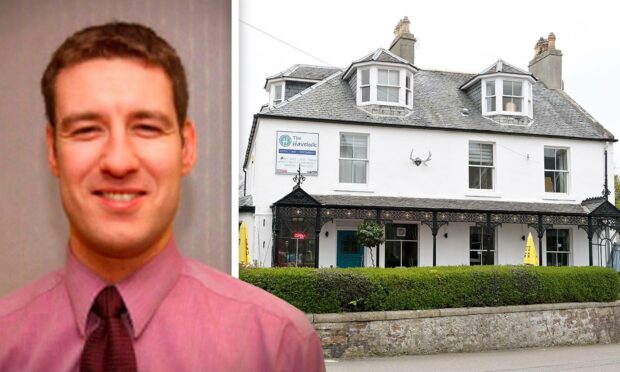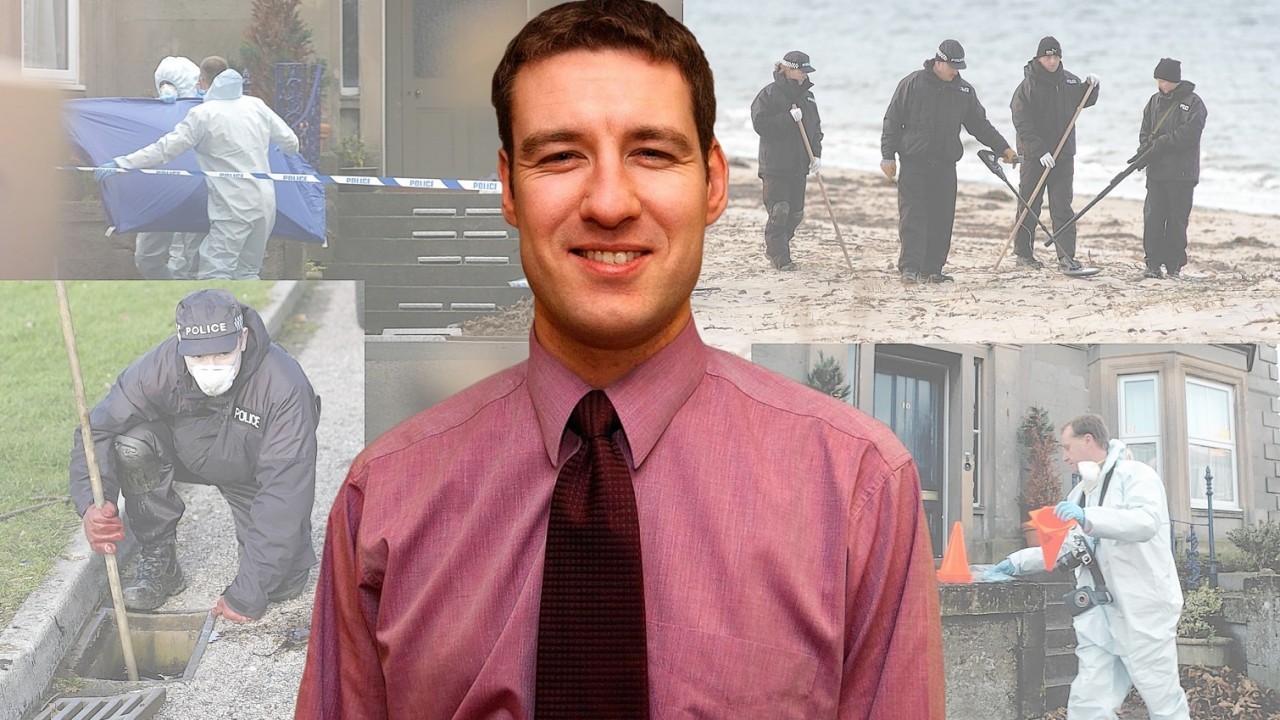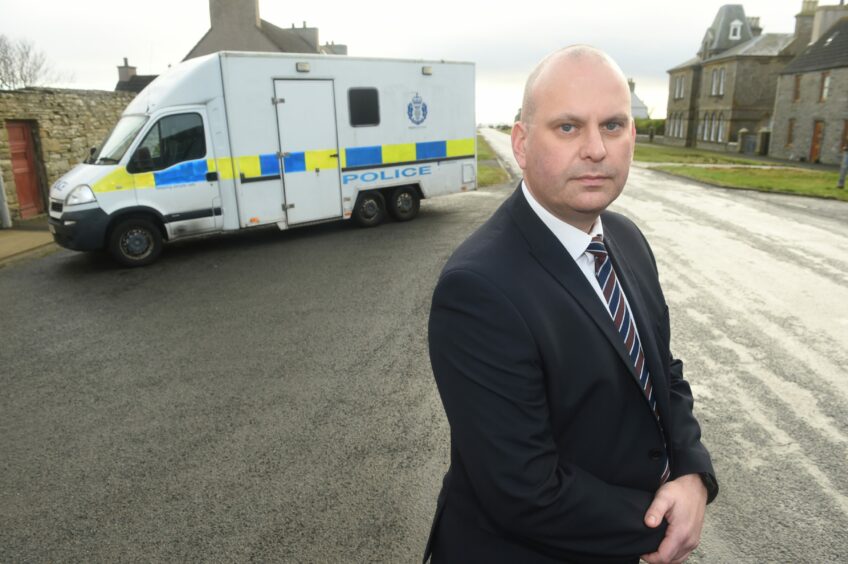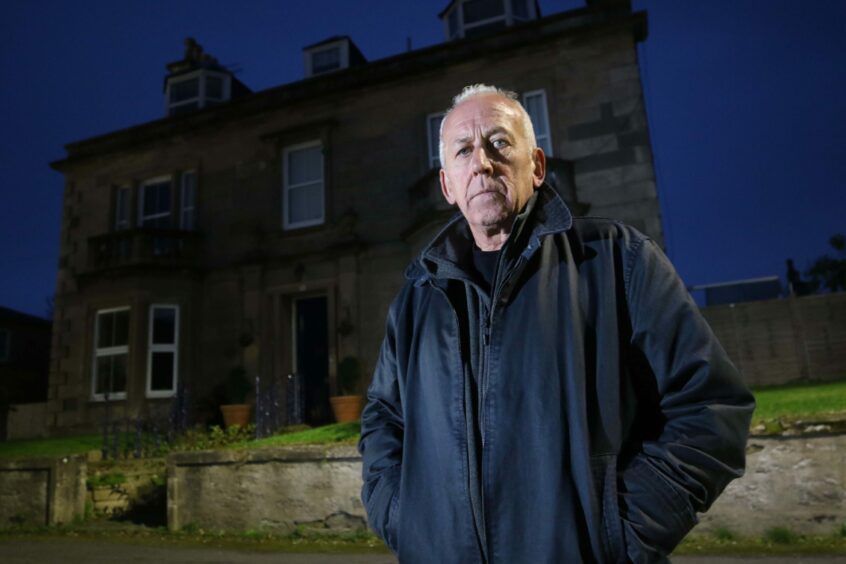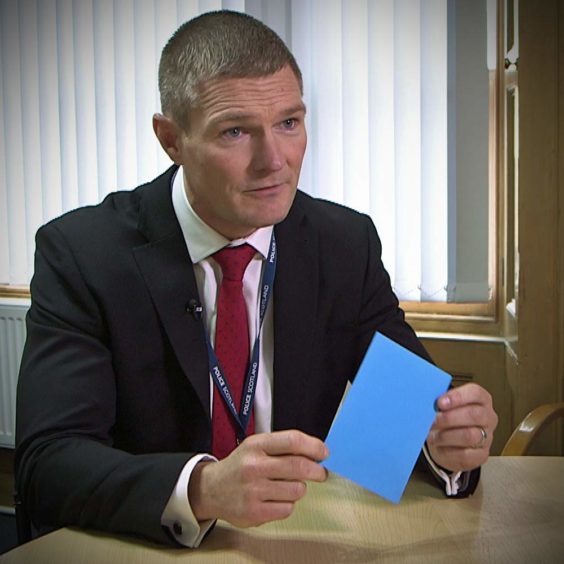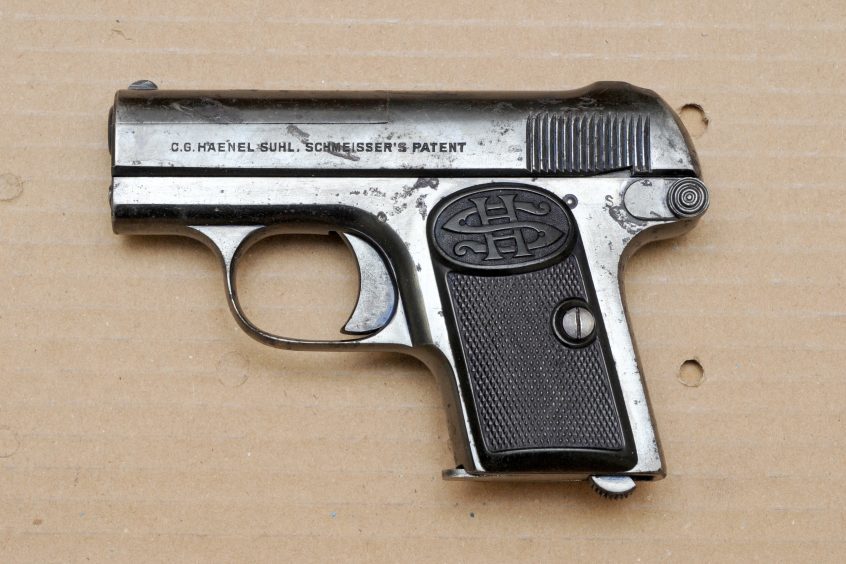Pub-goers may have heard a man making threats against Alistair Wilson’s life the night before the Nairn banker was shot dead on his doorstep, a TV documentary will reveal.
Detectives have told the programme why they believe the motive for his murder was a row over decking at the Havelock Hotel, a pub opposite the 30-year-old’s seaside home.
Channel 5’s “Murder On The Doorstep” will appeal for information from patrons who visited the licensed premises across from the crime scene at 10 Crescent Road in Nairn.
The broadcast on Thursday will retell the shocking story of the deadly shooting that happened 18 years ago today, around 7pm on Sunday November 28 2004.
It came days after the father-of-two lodged a formal objection to a decked drinking area next to his house, Detective Superintendent Graeme Mackie has told the true crime show.
“Homicides often come from totally disproportionate, irrational reasons. Trivial matters escalate to disproportionate levels.
“I know it’s really difficult to try and comprehend but that is the only aspect that we can see in Alistair’s life that was causing upset,” he explained.
The decking had been installed without planning permission before the Havelock Hotel’s owner at the time, Andy Burnet, applied for it retrospectively.
Mr Wilson’s letter of objection complained about beer glasses and broken glass “strewn in the street” and his family feeling “uncomfortable” with customers “staring” at them.
The document was sent to Highland Council’s planning department the week that he was gunned down outside his property.
A copy of the correspondence – revealing his identity – was then sent to the pub landlord two days before the banker died.
‘People were invested in this decking’
“The Havelock pub at that time was a really popular venue,” Det Supt Mackie said. “People were invested in this decking. People who attended that pub helped build it. They took a lot of pride in it.
“We’ve interviewed a lot of people who were in that pub that night. There was a level of conversation within the pub being upset towards Alistair complaining about it and the potential that it could be taken away.
“We want to find out if, during that weekend, anybody was making any threats.
“Was anybody speaking disproportionately about taking action against Alistair, demonstrating a level of real concern that would suggest Alistair may well be coming to harm at some point in the future?”
The senior officer added: “We believe it’s the motive or part of the motive and we need the community’s help – those that associated with the Havelock, those who might have been in the Havelock, just to get a better understanding of what was being discussed.
Police Scotland has previously stressed that Mr Burnet is being treated as a “key witness” and not a suspect.
Officers travelled to Canada earlier this year to speak with him at his new home in Nova Scotia.
In March, Police Scotland revealed that two men were seen with a handgun on Nairn’s East Beach, just one month before the tragic murder in 2004.
A witness had finally come forward, telling detectives the younger of the pair, a man in his 20s was handling the weapon, and the other was aged between 40 and 60 years old.
Focus on a new suspect
Then in September of this year, it emerged that the murder inquiry is now focused on a specific suspect who had not previously been considered by the police probe.
The Press and Journal understand that the man was living in Nairn at the time of the shooting and is linked to Andy Burnet, the former owner of the Havelock Hotel, on social media.
It’s also known that the new suspect, who used to visit the Havelock frequently but now lives elsewhere in Scotland, kept guns in his house and worked for the emergency services.
He’s been described as in his 20s when Alistair Wilson was killed, fitting the description of the alleged shooter, who police believe was aged 20-40 years old at the time.
‘I know who it is’
Former Metropolitan Police detective Peter Bleksley is the only author to have published a book on the Highland murder mystery.
The retired crimefighter, who shot to fame when he played “The Chief” on Channel 4’s “Hunted” TV show, has been investigating Mr Wilson’s execution-style killing.
“This should have been wound up years ago,” he said, adding: “There was a lack of experience in investigating these types of crimes”.
And Mr Bleksley told the Press and Journal that he’s hot on the trail of the new suspect.
“I know who it is. I have been to his property and I have put a business card under his door.
“I have spoken to his neighbours and a family member who tells me he is very difficult to get a hold of. But I will keep trying.
“I can say that he was convicted this summer in a Scottish court of possessing a knife. The crime dates back to 2019. He received a community punishment.”
Mysterious blue envelope
On the night of Alistair Wilson’s murder, the family man was getting his two young boys ready for bed when his wife, Veronica answered the door to a man who asked for Alistair by name.
When he went to the door, the man handed him an empty turquoise blue envelope which was roughly the size of a birthday card and had the name “Paul” on it.
Confused, Mr Wilson moved away from the door to speak with his wife about the visitor, before he returned to the door and was shot at point-blank range several times.
The blue envelope was never seen again.
Speaking about it in the Channel 5 documentary, Detective Inspector Gary Winter said: “We are no further forward with ascertaining whether it meant anything”.
The officer, who is leading the current investigation, added: “There is no evidence to support that Alistair had a grievance with anyone called ‘Paul’.
“Did it mean anything, or was it just a prop? Who knows? Only the shooter,” he said.
Viewers of Thursday’s television transmission will hear details of the antique German pistol used to end Alistair’s life, a Haenel Suhl.
“These types of handguns have been known to be found in loft clearances,” Detective Superintendent Graeme Mackie explained.
“Access to it might have been easier because it could have been among antiques a family has retained over a period of years”.
The unique lethal weapon, which shot the Bank of Scotland employee twice in the head and once in the chest, was recovered from a drain half a mile away, 10 days later.
When forensic experts examined the Haenel Suhl firearm, no useful evidence that could be linked to a suspect, such as DNA, could be detected.
Detective Inspector Gary Winter said: “We’ve had a look to try and identify how many have been found since the time of the murder and in the last 18 years since 2004.
“We’re aware of three being found in Scotland”.
The two other pre-Second World War handguns which were discovered have had no connection with any criminal activity.
Thursday’s documentary will explore all the theories and potential motives previously known to and speculated by the public.
Over the years, various potential scenarios have been considered but then dismissed.
They included a possible case of mistaken identity, an affair gone wrong and even involvement with organised crime gangs or dodgy dealings in banking.
But in his interview with programme makers, Det Insp Winter said: “Alistair’s role shouldn’t bring him into great conflict with anyone.
“Although the ‘bank manager’ term is used often, he’s not a guy with the keys to the safe.
“He’s not handing out massive sums of money. He’s developing business plans. His job is solely to get new business in for the bank.”
Another now rejected theory was that the Bank of Scotland employee, who was working his notice to leave the job, was assassinated by a paramilitary group such as the IRA.
But Det Supt Mackie has also ruled out any links to terrorism.
“It’s difficult to understand why that theory has come about,” he told the documentary.
“There’s been a number of inquiries both within the UK, within Ireland and we are content that there is no substance to any information that would suggest that specifically the IRA were involved in Alistair’s murder.
“There’s nothing in Alistair’s personal or work life that would even suggest or hint that he was in any way associated with paramilitary or organised crime groups.”
The programme, “Murder On The Doorstep: Who Killed Alistair Wilson?” – produced by True North Post – airs on Channel 5 this Thursday December 1 at 9pm.
Anyone with information that could help Police Scotland’s investigation can telephone the inquiry team on 101 or email: SCDHOLMESAberdeen@scotland.police.uk
